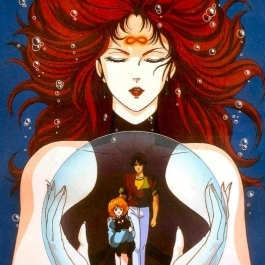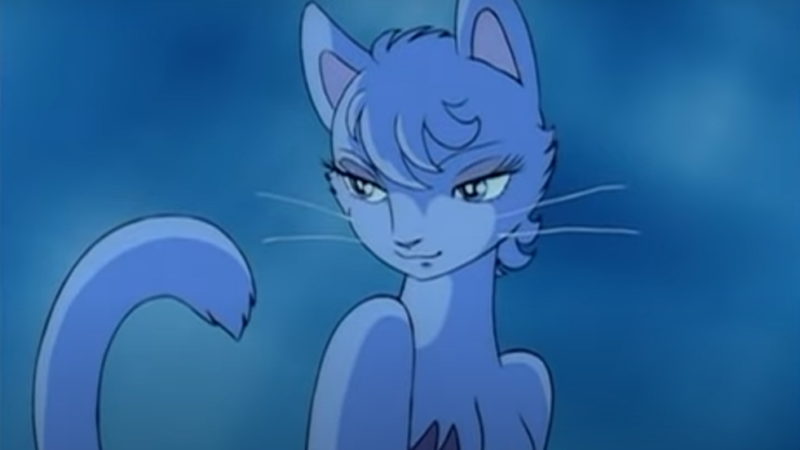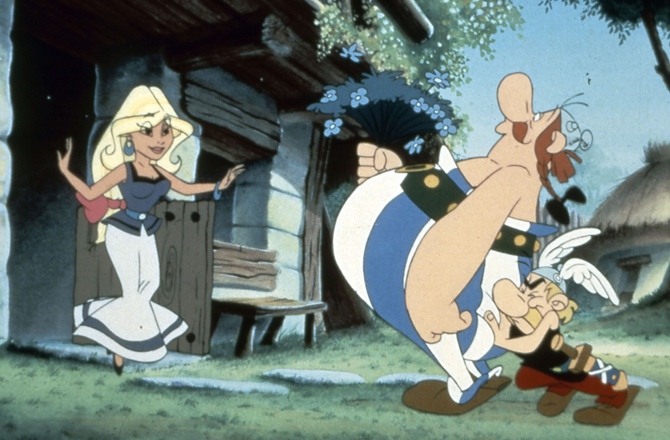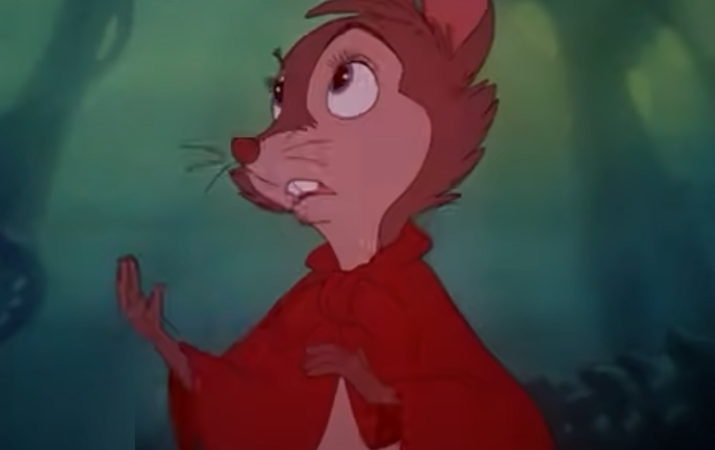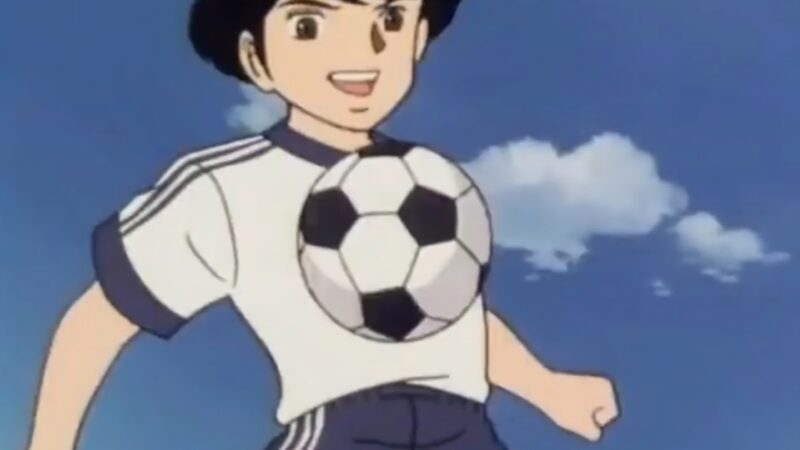The Wings of Honneamise - The 1987 animated film
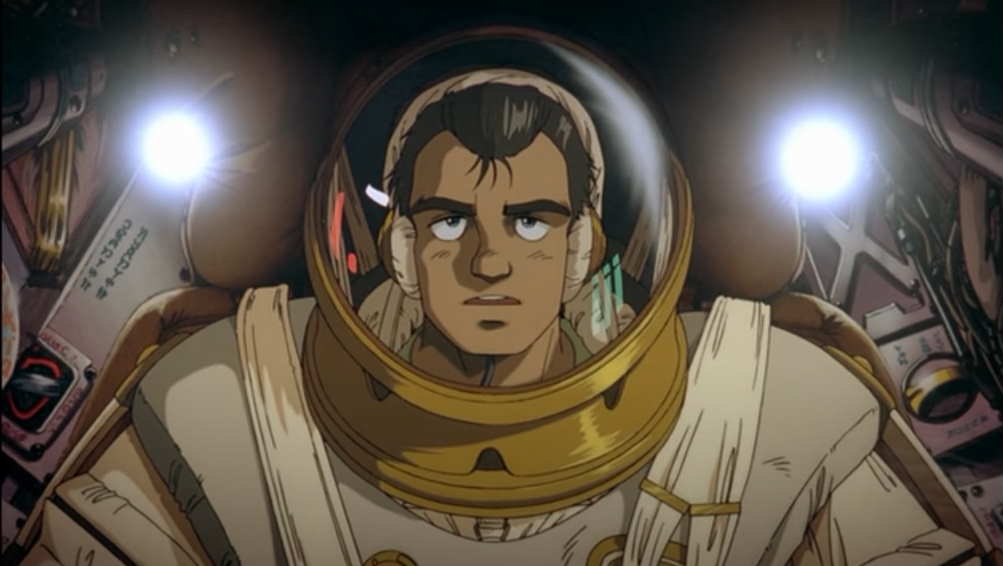
The wings of Honneamise (original Japanese title: 王立 宇宙 軍 オ ネ ア ミ ス の 翼 Ōritsu uchūgun - Oneamisu no tsubasa, lett. “Imperial Space Armies - The Wings of Honneamise”) is a 1987 Japanese animated (anime) science fiction film written and directed by Hiroyuki Yamaga, co-produced by Hiroaki Inoue and Hiroyuki Sueyoshi and planned by Toshio Okada and Shigeru Watanabe. Ryuichi Sakamoto, who would later share the Oscar for the soundtrack de The last emperor, was musical director. The film's story takes place in an alternate world where a disengaged young man, Shirotsugh, inspired by an idealistic woman named Riquinni, volunteers to become the first astronaut, a decision that draws them into both public and personal conflicts. The film was the debut work of the anime studio Gainax, whose subsequent television and film series Neon Genesis Evangelion would have garnered international recognition, and was the first anime produced by toy and game maker Bandai to eventually become one of Japan's best anime videos.

Yamaga and Okada had become famous by making amateur shorts aimed at fans of anime and manga characters, especially the opening animations of Daicon III and IV, but their speech to the Royal Space Force argued that the growth of the anime industry required a moving away from jobs that pleased fans on a superficial level, but reinforced their isolation, instead supporting a different kind of anime that attempted to engage fans as human beings, who shared the alienation issues of a larger society. The making of The wings of Honneamise involved a year-long collaborative design process using many creators, including some outside the anime industry, to build an elaborately detailed alternate world described as neither utopian nor dystopian, but "an attempt to approve of existence". Sci-fi author Ted Chiang, whose work served as the basis for the Oscar-nominated film Arrival, would later describe The wings of Honneamise as the most impressive example of world building in books or movies.
The collective approach of The wings of Honneamise to film making, his deliberate rejection of established anime motifs, his visual complexity and the general lack of professional experience among his staff have all been factors in his chaotic production, while growing uncertainty about the project has led to what is was described as an attempt by its investors and producers to "fix" the film before its release, forcing a belated name change to The Wings of Honneamise and a lavish, but deceptive advertising campaign that included deceptive advertising and a first run. scene at Mann's Chinese Theater on February 19, 1987. Although it received a generally good reception among fans of anime home video and industry, upon its release in Japan on March 14, 1987 (with praise from Hayao Miyazaki, and Mamoru Oshii), the film failed to recoup its costs at the box office. The anime film became profitable thanks to home video sales.
The Wings of Honneamise film did not receive an English-language commercial release until 1994, when Bandai licensed the film to Manga Entertainment. A dubbed 35mm version toured North American and UK theaters, during which it received coverage in major newspapers, but very mixed reviews. Since the mid-90s, it has received several English-language home video releases and various historical investigations of anime have viewed the film more positively; the director affirmed his belief in retrospect that the elements that made Honneamise's Wings unsuccessful made Studio Gainax's subsequent successes possible. [
History



In the Kingdom of Honnêamise, in a different, Earth-like world of mid-20th century technology, a young man named Shirotsugh Lhadatt recalls his upbringing and middle-class childhood dream of flying jets for the navy. His votes are not positive and Shirotsugh instead ends up joining the "Royal Space Force", a tiny unit with poor morale, whose commander General Khaidenn dreams of human spaceflight, but is barely capable of launching satellites. without pilot. One night, Shirotsugh meets a woman named Riquinni who is preaching in the red light district. Riquinni Nonderaiko, who lives with a grumpy little girl named Manna, surprises him by suggesting that humanity could find peace through space travel. Inspired, Shirotsugh volunteers for a desperate project to prevent the dissolution of the Space Force: to send the first astronaut into orbit.



Riquinni has Shirotsugh study the scriptures, but gets angry when he suggests that she "compromise" with God. Riquinni believes that this compromise is the cause of the world's ills. The general arranges a shady deal to help finance his project and tells a cheering crowd that the orbital capsule will be a "space warship." Shortly after, the Riquinni farmhouse was foreclosed and demolished; Unwilling to expose Manna, whose mother was constantly abused by her husband, to other conflicts, he rejects Shirotsugh's indignant offer to find her a lawyer. He begins to read Riquinni's scriptures, which state that humanity is condemned to violence for stealing fire.



It is suggested that a test blast killing the chief rocket engineer is the work of radicals. Shirotsugh confuses his friends by sympathizing with the protesters, who claim the mission is a waste of federal funding. The launch site is suddenly moved to the southern border of the Kingdom. This will help reach orbit, but it is also adjacent to a territory occupied by their international rival - the distant Republic. The general is surprised to learn that his superiors see the rocket only as a useful provocation; Unknown to the Kingdom, the Republic intends to buy time to put its forces in position by assassinating Shirotsugh.
Increasingly disenchanted, Shirotsugh goes AWOL, giving his money to the homeless and joining Riquinni's ministry, but is troubled by Manna's continued silence and seeing the money Riquinni holds. He turns away when he reads from the scriptures that his efforts for truth and goodwill fail, and one can only pray. That night, he sexually assaults her; when he hesitates momentarily, she knocks him unconscious. The next morning, repentant Shirotsugh is baffled when Riquinni claims he did nothing, apologizing for beating up "a wonderful person like her." Reuniting with his best friend Marty, Shirotsugh asks if one could be the villain in one's life story, not his. hero. Marty responds with the idea that people exist because they serve each other. The Republic Killer Strikes: Shirotsugh attempts to escape, but eventually reacts, killing the killer. The general confides to the later injured astronaut that he once wanted to be a historian and not a soldier, but he found the story more difficult to deal with, because he taught him that human nature would not change.



At the launch site, the crew finishes assembling the rocket even as both sides prepare for the intended attack. Without informing his superiors, the general decides to jump in early, shortening the security procedures and Shirotsugh agrees. When Republic forces invade to take the rocket by force, an evacuation is ordered, but Shirotsugh rallies the crew to proceed with the countdown. The combined ground-to-air assault ceases with the unexpected rocket launch and the Republic forces withdraw. From orbit, Shirotsugh makes a radio broadcast, unsure if anyone is listening to him: although humans have brought ruin to each new frontier, he still asks to give thanks for this moment, praying for forgiveness and guidance. As the capsule traverses the diurnal side, a montage of visions suggests Shirotsugh's childhood and the passage of history; far below, Riquinni, preaching where he first met her, is the only one looking up as the snow begins to fall and the camera moves back, past the ship and her world, towards the stars.
Characters
Shirotsugh Lhadatt
Riquinni Nonderaiko
Manna Nonderaiko
Marty Tohn
General Khaidenn
Dr. Gnomm
Kharock
Yanalan
Darigan
Domorhot
Tchallichammi
Majaho
Nekkerout
Professor Ronta
Production
The wings of Honneamise was developed from an anime proposal presented to Bandai's Shigeru Watanabe in September 1984 by Hiroyuki Yamaga and Toshio Okada from Daicon Film, an amateur film studio active in the early 80s, associated with students of the Osaka University of the Arts and fandom of science fiction in the Kansai region. Okada first met Watanabe in August 1983 at a tokusatsu fan convention in Tokyo where Daicon Film screened their live-action short The Return of Ultraman and ran a sales booth for the merchandising company. Daicon fans, General Products; Watanabe had been involved in product planning for Bandai's “Real Hobby Series” stickers. The position also led Watanabe to Bandai Emotion's then-new home video label, where he helped develop Mamoru Oshii's Dallos. Released in late 1983, Dallos would become the first original anime video animation (OVA), an industry event later described as the beginning of a new "third medium" for anime beyond film or television, offering perspective of "a medium in which [the anime] could" grow ", allowing the creators more mature thematic experiments».
Okada and Yamaga's speech at Watanabe had followed the recognition Daicon Film received earlier that year in Animage magazine through a special Anime Grand Prix secondary award awarded to their 8mm short film Daicon IV Opening Animation. Their September 1984 proposal gave the blueprint for an anime titled Royal Space Force, to be produced under the direction of a new professional studio called Gainax. The proposal listed five initial staff members for the anime. Four had previously been associated with Daicon Film: Yamaga was to be the creator and director of the anime's concept and Okada its producer, Yoshiyuki Sadamoto its lead character designer and Hideaki Anno its lead mechanical designer. The fifth, Kenichi Sonoda, listed as head of the anime's sevens (model sheets, written to provide key animators with their guides on what objects and people to animate should look like) had previously collaborated on product development at General Products.
Technical data
Original title Wings of the Royal Space Army Oneamis
Ōritsu uchūgun - Oneamisu no tsubasa
Original language Japanese
Country of Production Japan
Year 1987
Duration 125 min
Relationship 16:9
Gender animation, science fiction
Regia Hiroyuki Yamaga
Film script Hiroyuki Yamaga
Producer Hiroaki Inoue, Hirohiko Sueyoshi
Executive producer Shigeru Watanabe, Toshio Okada
Production house Gainax
Music Ryuichi Sakamoto
Art director Hiromasa Ogura
character design Yoshiyuki Sadamoto
Original voice actors
Leo Morimoto as Shirotsugh Lhadatt
Mitsuki Yayoi as Riquinni Nonderaiko
Aya Murata as Manna Nonderaiko
Bin Shimada: Yanalan
Hiroshi Izawa: Darigan
Kazuyuki Sogabe: Marty
Kouji Totani: Tchallichammi
Masahiro HiranoMajaho
Italian voice actors
Ivo De PalmaShirotsugh Lhadatt
Roberta Gallina Laurenti as Riquinni Nonderaiko
Lara Parmiani as Manna Nonderaiko
Claudio Moneta: Yanalan
Luca SemeraroDarigan
Marco BalzarottiMarty
Raffaele Fallica: Tchallichammi
Vittorio Bestoso: Majaho
Source: https://en.wikipedia.org/wiki/Royal_Space_Force:_The_Wings_of_Honn%C3%AAamise

